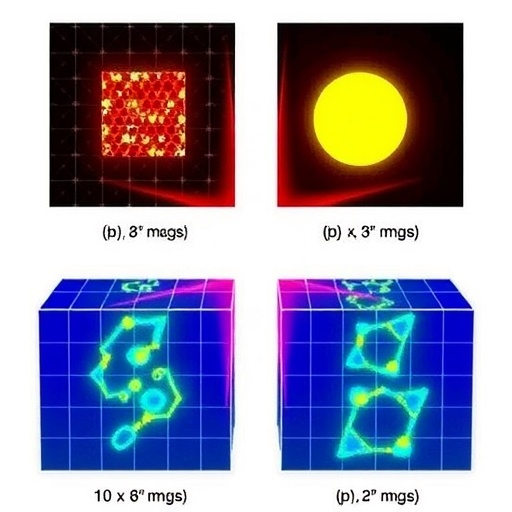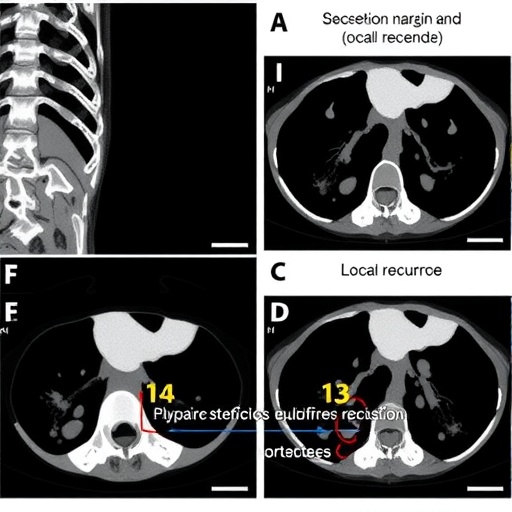In the relentless pursuit of sustainable and efficient energy solutions, solar cell technology continues to evolve, promising groundbreaking advancements that could reshape our global energy landscape. Among the myriad of emerging photovoltaic materials, antimony selenosulfide (Sb₂(S,Se)₃) stands out due to its intrinsically advantageous properties. However, despite its potential, the power conversion efficiency (PCE) of Sb₂(S,Se)₃ solar cells has been stagnant, capped at approximately 10%, primarily due to significant charge carrier loss within the material. A recent study published in Nature Energy by Dong et al. unveils a comprehensive carrier management strategy that significantly elevates the performance of Sb₂(S,Se)₃ solar cells, pushing certified efficiencies beyond this longstanding threshold.
The fundamental challenge with antimony selenosulfide stems from the inefficiencies in charge carrier dynamics. In a photovoltaic cell, photogenerated electrons and holes must be effectively separated and collected at the respective contacts to generate current efficiently. However, in Sb₂(S,Se)₃ absorbers, charge carriers frequently recombine prematurely, especially near the interfaces and within the bulk material, leading to substantial energy losses. These recombination pathways have thwarted previous efforts to enhance device efficiency, necessitating innovative engineering at the contact and interface layers to mitigate such losses.
Dong and colleagues approached this problem by reexamining the front electrode architecture, particularly targeting the widely used fluorine-doped tin oxide (FTO) substrate. Conventional planar FTO substrates provide reliable conductivity but are limited in their ability to maximize light harvesting, especially as thickness and absorption properties of new materials evolve. By adopting a textured FTO substrate, the research team harnessed enhanced light scattering effects, which significantly increased the optical path length of incident photons within the Sb₂(S,Se)₃ absorber layer. This texture-induced scattering effectively maximizes light absorption, thus generating more charge carriers for extraction.
.adsslot_Md20Q1GDAE{ width:728px !important; height:90px !important; }
@media (max-width:1199px) { .adsslot_Md20Q1GDAE{ width:468px !important; height:60px !important; } }
@media (max-width:767px) { .adsslot_Md20Q1GDAE{ width:320px !important; height:50px !important; } }
ADVERTISEMENT
Yet, the introduction of a textured substrate is a double-edged sword. The very surface irregularities that give rise to enhanced light scattering also create morphological challenges. These include voids and shunt pathways at the interface between the FTO and the critical CdS electron-selective buffer layer, which are detrimental due to increased charge recombination and current leakage. To overcome this, the researchers expertly applied a thin SnO₂ layer using atomic layer deposition (ALD) directly onto the textured FTO prior to CdS deposition.
SnO₂, known for its excellent transparency and proper band alignment with CdS and the Sb₂(S,Se)₃ absorber, provided a uniform and conformal coating over the textured substrate. This conformality ensured a continuous interface without physical defects or electrical discontinuities, effectively eliminating unwanted shunt paths and facilitating better charge transport. The ALD method, renowned for its atomic-level thickness control and uniform deposition in complex geometries, was pivotal in this achievement, enabling coating of the intricate textured FTO surfaces without compromising the delicate CdS layer’s properties.
The cleverly engineered band structure resulting from this FTO/SnO₂/CdS configuration optimized charge carrier extraction by aligning energy levels to reduce interface recombination losses. Simultaneously, within the bulky antimony selenosulfide layer itself, the team refined compositional grading and defect passivation techniques that lowered recombination centers. Consequently, both interface-related and bulk charge recombination were suppressed, unlocking previously unattainable device efficiencies.
Moreover, the researchers demonstrated the versatility and generality of their method by applying it to selenourea-based Sb₂(S,Se)₃ fabrication routes, traditionally different in chemical processing. The approach maintained the same enhancements in charge extraction and overall device performance, suggesting broad applicability across various precursor chemistries in antimony selenosulfide photovoltaics.
An important aspect of this work lies in scalability prospects. Moving beyond small lab-scale devices, the team successfully fabricated solar cells with active areas of 1 cm²—significantly larger than many prototype devices—which retained commendable efficiency and stability. Such scaling is a critical step in transitioning laboratory breakthroughs into industrial-scale manufacturing lines, where surface uniformity, process repeatability, and device longevity become paramount criteria.
The stability exhibited by these solar cells over extended periods, coupled with sustained performance metrics, addresses a frequently overlooked yet vital parameter in photovoltaic technology development. Devices must maintain efficiency over thousands of hours under realistic environmental conditions to offer compelling alternatives to existing silicon-based cells. The findings reported here bode well for the practical deployment of Sb₂(S,Se)₃ solar cells, furnishing confidence that these advances are not limited to transient experimental results.
Interfacing electron-selective layers with well-engineered electrodes elucidates a key principle emerging from this study: the convergence of material science, surface engineering, and precise atomic-scale fabrication techniques can pave the way for unlocking latent photovoltaic potential. Controlling charge carrier pathways at interfaces, which have historically proven to be bottlenecks for emerging thin-film technologies, is now demonstrably achievable with strategic multi-layered designs.
This work also underscores the importance of atomic layer deposition as a versatile tool in photovoltaics. Its ability to deposit ultra-thin, pinhole-free films with meticulous thickness control and compositional tuning on complex topographies embodies a game-changing technological lever. The successful implementation of ALD SnO₂ layers in this context could inspire further adaptations across other thin-film and emerging photovoltaic systems, enhancing interface engineering protocols industry-wide.
As the field marches forward, questions remain regarding the long-term operational stability under varied climatic conditions, integration with encapsulation technologies, and compatibility with flexible substrates for wearable or building-integrated photovoltaics. Nevertheless, the groundwork established here lays a robust foundation for tackling these challenges systematically.
In conclusion, the work by Dong et al. represents a significant leap in antimony selenosulfide solar cell research, demonstrating that clever electrode design paired with electron-selective layer engineering can decisively overcome detrimental charge recombination hurdles. The attainment of a certified 10.70% efficiency augmented by scalability and stability considerations signals a promising horizon for this emerging photovoltaic class poised to make impactful contributions to the clean energy revolution.
Subject of Research: Charge carrier management and interface engineering in antimony selenosulfide (Sb₂(S,Se)₃) solar cells
Article Title: Carrier management through electrode and electron-selective layer engineering for 10.70% efficiency antimony selenosulfide solar cells
Article References:
Dong, J., Gao, Q., Wu, L. et al. Carrier management through electrode and electron-selective layer engineering for 10.70% efficiency antimony selenosulfide solar cells. Nat Energy (2025). https://doi.org/10.1038/s41560-025-01792-y
Image Credits: AI Generated
Tags: antimony selenosulfide solar cellscarrier management strategiescharge carrier dynamics in photovoltaicsemerging solar cell technologiesenergy loss reduction in solar technologyinnovative photovoltaic materialsinterface engineering in solar cellsphotovoltaic cell performance enhancementpower conversion efficiency improvementsrenewable energy advancementssustainable energy solutions






